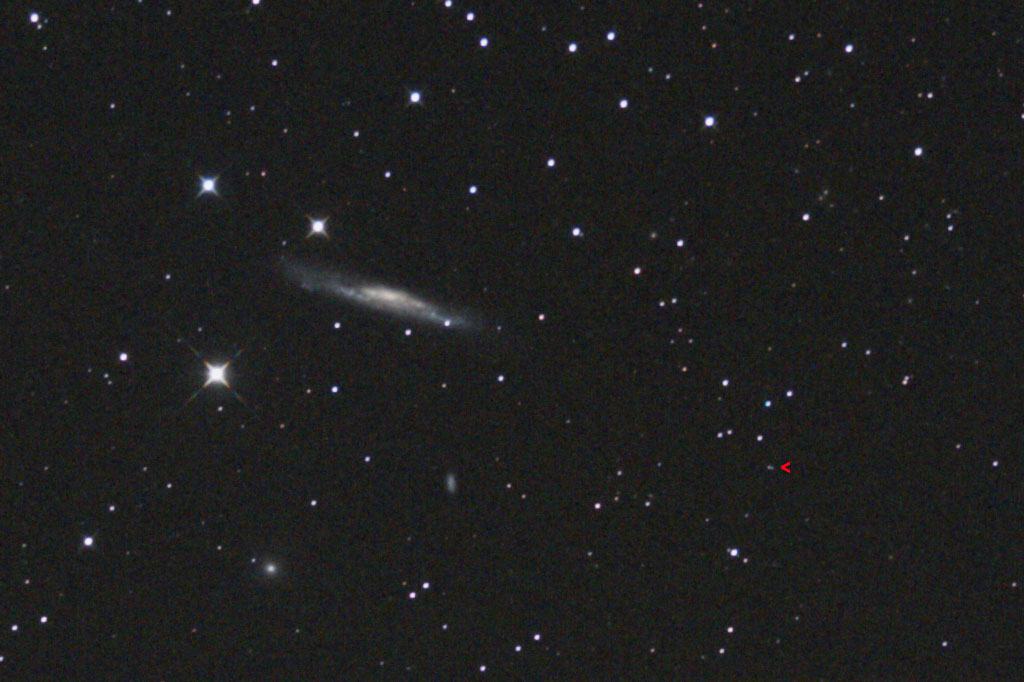Daily Image
14-04-2008Twin Quasar
| Submitter: | Albert van Duin |
| Description: | The Twin Quasar (Double Quasar) or Old Faithful is also known as QSO 0957+561. It was the first identified gravitationally lensed object. QSO 0957+561 A and QSO 0957+561 B is a double-imaged quasar, meaning that an intervening mass concentration between Earth and the quasar bends light so that two images of the quasar appear in the sky. This is known as gravitational lensing, and is a consequence of Einsteinian warped space-time. The quasar lies at redshift z = 1.41(8.7 billion ly), while the lensing galaxy lies at redshift z = 0.355 (3.7 billion ly). The lensing galaxy lies almost in line with the B image, lying 1" off. The quasar lies 10" north of NGC 3079, in the constellation Ursa Major. The Twin Quasar's two images are separated by 6". Both images have an apparent magnitude of 17, with the A component having 16.7 and the B component having 16.5 . There is a 417 ± 3 day time lag between the two images. The lensing galaxy, YGKOW G1 (sometimes called G1 or Q0957+561 G1), is a giant elliptical (type cD) lying within a cluster of galaxies that also contribute to the lensing. Rudy Schild announced findings which suggest that the object at the heart of Q0957+561 is not a supermassive black hole, as is believed to be the case for all quasars. Schild's team at the Harvard-Smithsonian Center for Astrophysics found that the jets originated 8000 AU from the poles of the centre, in a region 1000AU across, and that "this quasar appears to be dynamically dominated by a magnetic field internally anchored to its central, rotating supermassive compact object" (Rudy E. Schild). The accretion disc ends at 2000AU from the centre, and the inner edge is intensely radiating. There also appears to be a broad conic outflow from the accretion disc. This outflow shines in an Elvis structure (cf. Martin Elvis). Source: Wikipedia This image of Galaxy NGC3079 and the Twin Quasar (red arrow) is a 15 minute integration made from my back garden in Beilen with an 8"ASA Astrograph and a modified Canon 40D Digital camera. It is certainly the most distant object I ever imaged! |
| Copyright: | Albert van Duin |
| Tweet |  |
